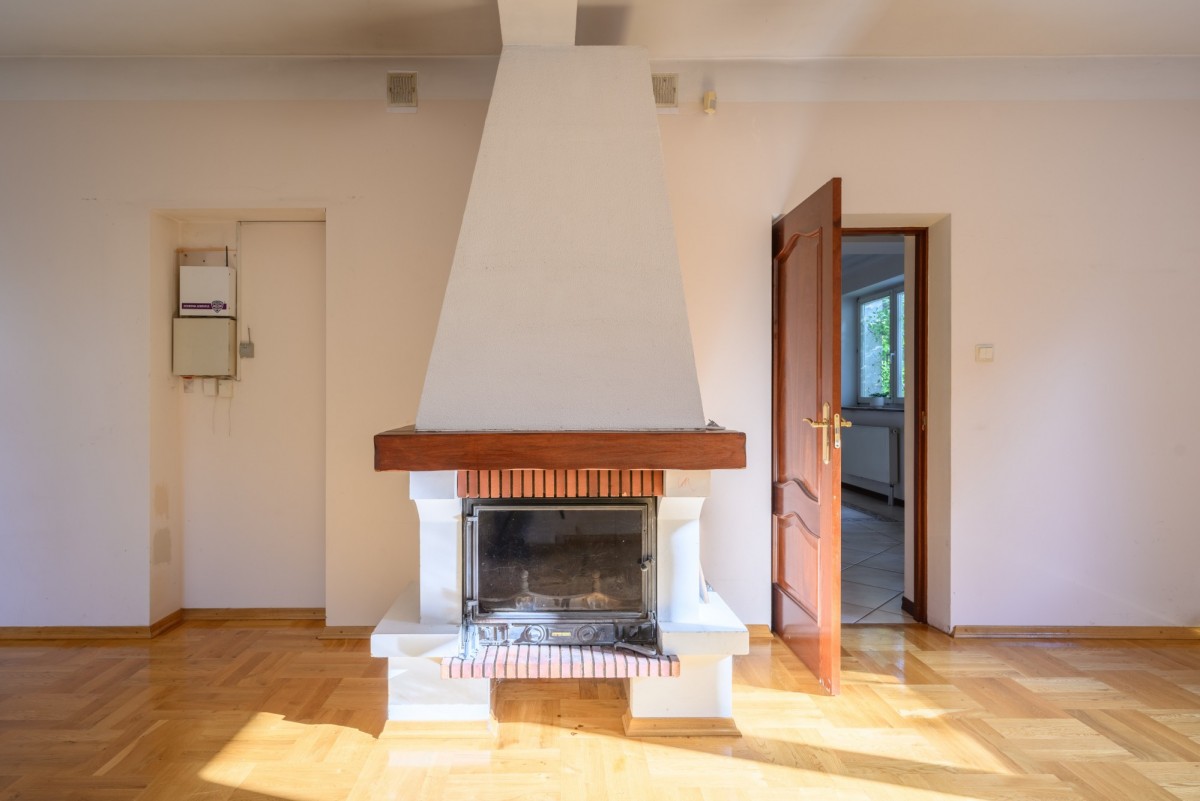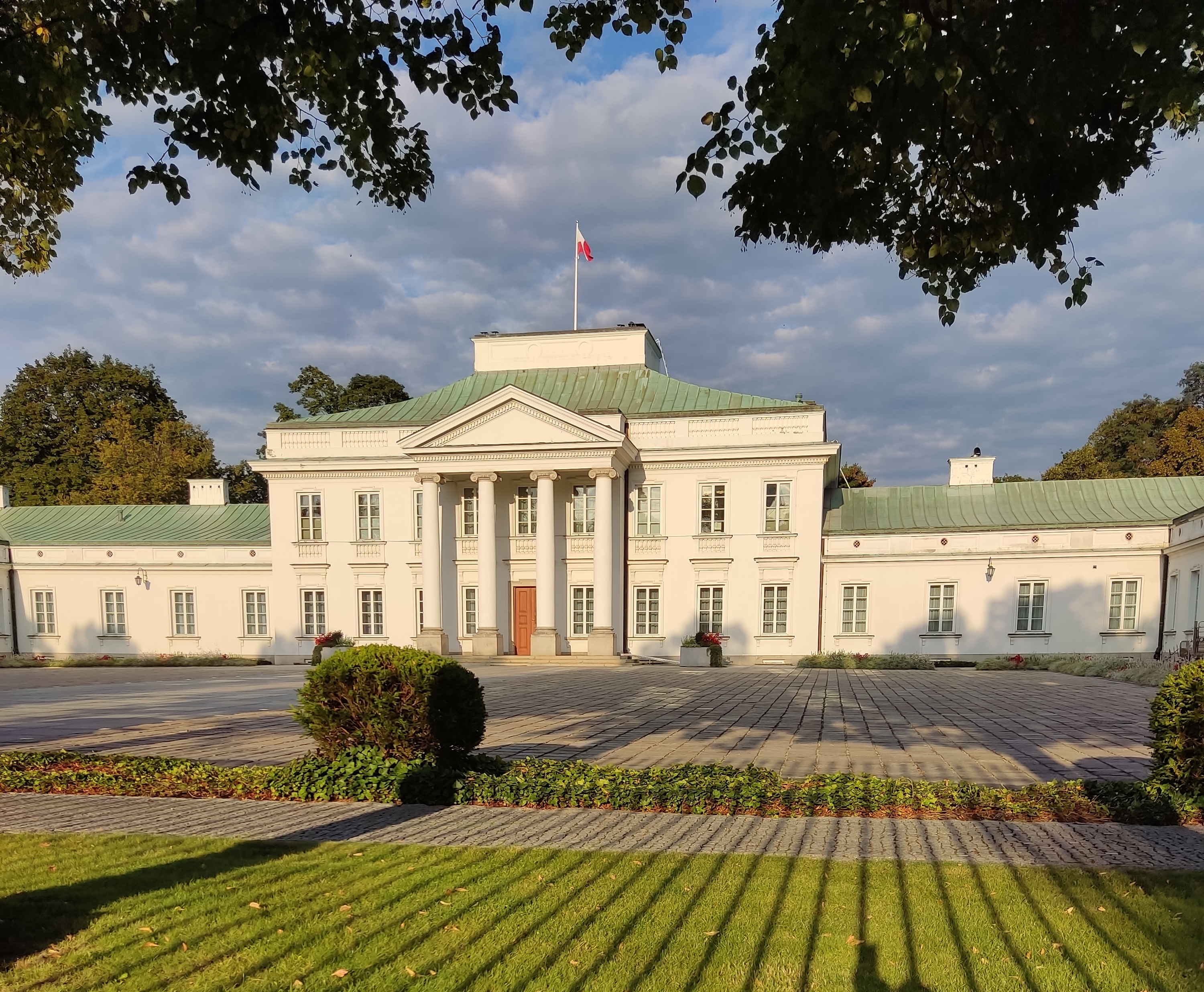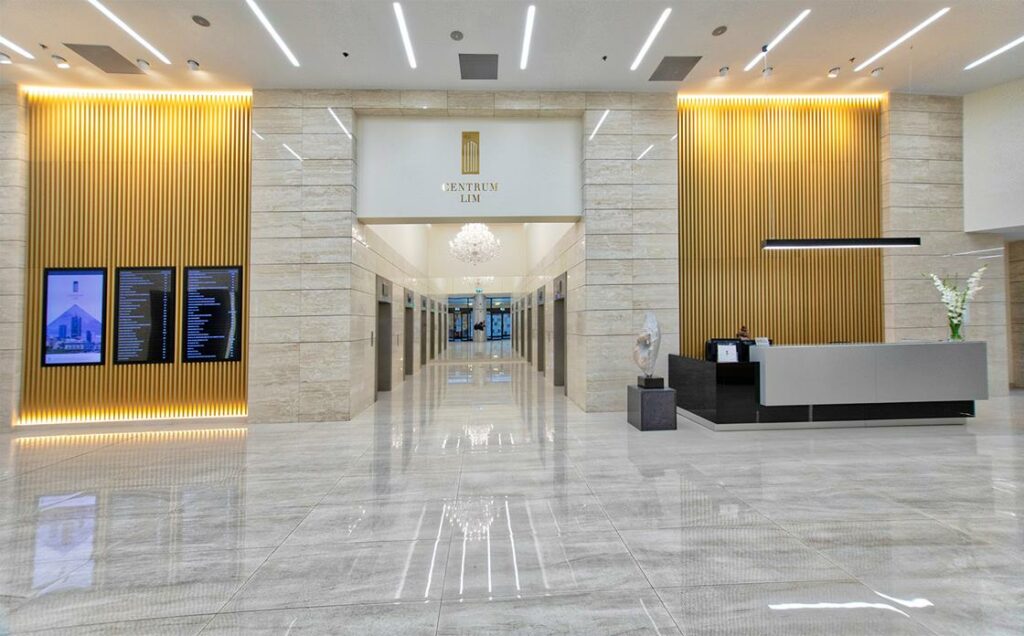Mokotow. Microdistrict (obszar) „Wierzbno” (Wierzbno)

Location and administrative boundaries of the Wierzbno microdistrict
Wierzbno is a former village, now a microdistrict in the Mokotów district of Warsaw. Wierzbno is located in the central-western part of the Mokotów district, in the Górny Mokotów subregion. It borders the Sielce neighborhood (which is already located on Dolnym Mokotowie) from the east, Ksawerowem from the south, Wyględowem from the west, Starym Mokotowem from the north, and Służewcem from the southwest.
Wierzbno is a former village, now a microdistrict in the Mokotów district of Warsaw. Wierzbno is located in the central-western part of the Mokotów district, in the Górny Mokotów subregion. It borders the Sielce neighborhood (which is already located on Dolnym Mokotowie) from the east, Ksawerowem from the south, Wyględowem from the west, Starym Mokotowem from the north, and Służewcem from the southwest.
The boundaries of the Wierzbno microdistrict are determined as follows: streets Dolna – Racławicka – Wołoska – Woronicza – through the Arkadia park – Skarpy Warszawskiej crown in a northern direction (according to the slope line outlined by Mokotów Dolny, i.e. crossing Giżyckiego al. and Żywnego street, along the eastern fence of Warszawianki to Dolnej street at the height of kościoła św. Michała).
Characteristics of Wierzbno
Wierzbno is a residential area, the majority of the eastern part of which consists of villas and apartment buildings, the western part and part of the east consist of large-panel apartment buildings.
The eastern part of the neighborhood, located mainly between Niepodległości Avenue and Puławska Street, consists mostly of low-rise villas and single-family houses. There are also apartment buildings in the area of Puławska Street. Between Puławska, Bielawska, Żywnego streets and the tops of the Warsaw Escarpment there is the Skarpa Puławska residential complex, consisting of eight 13-storey multi-apartment panel residential buildings.
In the eastern part of the territory of the Wierzbno city information system, between Wołoska Street and Niepodległości Avenue, the Wierzbno residential complex is located, consisting of multi-apartment residential large panel buildings.
Name of the microdistrict Wierzbno
The name Wierzbno comes from the Polish word wierzba, which means willow. Wierzbno's founder, Józef Jakubowski, originally named it "Pod Wierzbą," meaning "Under the willow tree," most likely referring to the willows growing in the area.
History of Wierzbno
Wierzbno was founded as a small settlement in the 1770s. This piece of land was donated by the King of the Polish-Lithuanian Commonwealth Stanislaw August Poniatowski to the French general Józef Jakubowski. On his lands, Jakubowski founded a small settlement like the Wierzbno farm near the village of Mokotów (now part of Starego Mokotowa).
In 1786, the Królikarnia palace, owned by Carlo Alessandro Tomatis, was built in the south of Wierzbno. In 1794, during the Kosciuszko Uprising, Tadeusz Kosciuszko, the leader of the rebel forces, lived here. In 1816 Tomatis sold it to the Radziwill family.
At the beginning of the 19th century, in the eastern part of the current Wierzbno microdistrict, the Henryków farm was founded, which was originally inhabited by the French. Around 1850, the palace of the Fanshawe family was built at what is now Puławska Street 107A.
In 1840, the nobleman Ksaver Pusłowski built his residence in the south of Wierzbno and next to it the road that forms the current Ksawerów street, and in 1849 he bought the nearby Królikarnia palace, which was originally built in 1786. Over time, this area developed into a separate settlement, forming the modern northern part of the Ksawerów district.
In the 19th century, Wierzbno functioned as a spa village, and from 1840 to 1866 a hydropathic clinic was opened in the village, which used a local spring and operated a hydrotherapy center. At that time, Wierzbno and Mokotów became popular holiday villages.
In 1856, at the intersection of the current Puławska and Dolna streets, the Church of the Nativity of the Blessed Virgin Mary was built. It was the first church built within the present boundaries of Mokotowa. The building was destroyed in 1944 during the Warsaw Uprising. In its place in 1966, the Church of St. Michael the Archangel was built.
In 1881 Wierzbno was connected to Warsaw by a cavalry line. In 1909 it was replaced by a tram line.
In 1892, Fort M-Che was built near Wierzbno, as part of the inner circle of the Warsaw Fortress series of fortifications built around Warsaw by the Russian Empire. In 1909, it was decided to decommission and demolish the Warsaw Fortress fortifications due to the high costs of maintaining them, resulting in Fort M-Che being demilitarized and abandoned, and later dismantled in the 1920s.
From 1867 to 1916 Wierzbno belonged to the Mokotów commune. On April 8, 1916, Wierzbno, together with the rest of the commune, was incorporated into the city of Warsaw.
In 1906, the Wierzbno railway station was opened. It was part of the railway line between the stations Warszawa Mokotów and Nowe Miasto nad Pilicą. It was located near the current Arcadia Park, near Puławska Street. The station operated until 1937.
The main development of Wierzbno began in the 1920s and continued throughout the 1930s, mainly in the area between the current Niepodległości Avenue and Puławska Street, where villas and private houses were built. Apartment buildings were also built in the area of Puławska Street.
The development included only the eastern part of the current territory of the Wierzbno city information system, while the western part remained undeveloped until the 1960s.
In 1931, the St. Elizabeth's Hospital opened in Wierzbno (originally known as St. Anthony's Hospital, run by the Institute of the Sisters of St. Elizabeth, located at Goszczyńskiego 1). The building was destroyed during the Second World War and rebuilt in 1946 – 1948.
In 1938, the city Dreszer Park was opened in Wierzbno. The western part of the park was separated from the rest, forming the Second Jordan Garden.
Between 1954 and 1962, the Warszawianka sports complex was built in the north-eastern part of the Wierzbno district.
In 1957, the building of the Polish Radio, the national public broadcasting organization of Poland, was opened at 77/85 Niepodległości Avenue.
Between 1960 and 1975, the Wierzbno housing estate was built in the western part of the current Wierzbno city information system area.
Between 1965 and 1971, in the eastern part of the current urban information system microdistrict in Wierzbno, the Skarpa Puławska residential complex was built, consisting of eight 13-storey multi-apartment large panel buildings.
Between 1968 and 1970, on the current border of Wierzbno and Sielce, the city park Arkadia was built, located in the area between Puławska, Żywnego, Piaseczyńska and Idzikowskiego streets. It is located next to the gardens of the Krolikarnia Palace.
In 1995, two stations of the M1 line of the Warsaw Metro were opened in the area. These were Wierzbno station and Racławicka station.
On October 4, 1996, the Mokotów district was divided into microdistricts of the city information system, one of which was the Wierzbno microdistrict.
On July 17, 2014, the municipal district of Wierzbno was founded and is governed by the district council. It includes most of the territory of the city information system.
Henrykow
The Wierzbno microdistrict includes the village of Henryków. This is a residential area mainly consisting of villas. Henryków was founded by Henryk Bonnet at the beginning of the 19th century and was originally settled by the French. From 1867 to 1916 Henryków belonged to the Mokotów commune. On April 8, 1916, Henryków, along with the rest of the municipality, was incorporated into the city of Warsaw. Throughout the 1920s and 1930s, the area underwent large-scale development, with villas being built. On October 4, 1996, the Mokotów district was divided into parts of the City Information System, and Henryków became part of the Wierzbno district.
Wierzbno development
Wierzbno is an area with many villas, with preserved old buildings. Development in the Wierzbno microdistrict began to appear only in the interwar period and mainly in its eastern part, located between the Niepodległości Ave. and Puławską Ave. planned at that time. These were villas built along the streets Czeczota (on the territory of the former fort M-Tsche), Goszczyńskiego, Tynieckiej, Odyńca, Ursynowskiej, Pilickiej and Naruszewicza. Several blocks of apartment buildings were also built on the street. Puławskiej.
The Elżbietanek Sisters' Hospital was also created at Goszczyńskiego, Dreszera Park at ul. Odyńca and the secondary school building on the street. Woronicza.
Western Wierzbno during this period was an area where housing construction was only planned and only a few buildings were built for the war. Only the passage of streets was planned, where the main axes of the village were to become the streets Naruszewicza, Wincentego Pola, Rzewuskiego. It is interesting that the street is important today. Woronicza had no significance in the plans at that time.
After the war, the western area remained undeveloped until the 1960s, when the Wierzbno residential complex, consisting of multi-apartment residential large panel buildings, was built here in 1960-1975. It was one of the first blocks in Poland built using large-panel assembly technology. It was built between Wołoska, Woronicza streets, Niepodległośc Avenue and Odyńca Street.
Between 1965 and 1971, in the eastern part of the current Wierzbno microdistrict, the Skarpa Puławska residential complex was built, consisting of eight 13-story multi-apartment residential large panel buildings, which were planned to accommodate from 4 to 5 thousand people. It was built between Puławska, Bielawska, Żywnego streets and the tops of the Warsaw Escarpment. Skarpa Puławska was also one of the first neighborhoods in Poland to be built using large-panel assembly technology and, at the time of construction, its houses were the tallest buildings in the country built using this technology.
- Residential complex Skarpa Puławska
Skarpa Puławska, also known as Skarpa and Bielawska-Żywnego, is a residential complex in the Wierzbno microdistrict, in the Mokotów district. It is located between Puławska, Bielawska, Żywnego streets, the tops of the Warsaw Escarpment and around the Warsawianka sports complex. Skarpa Puławska was built between 1965 and 1971. After its construction, the buildings of the quarter became the tallest and one of the first large-panel buildings in Poland.
The name Skarpa Puławska is translated from Polish as Puławy Escarpment. We are talking about the Warsaw Escarpment, on which the complex was built, and Puławska Street, which forms one of its boundaries and is named after the city of Puławy in Poland. The complex is also sometimes simply called Skarpa. The Warsaw City Council calls this area Bielawska-Żywnego, which means Bielawska Street and Żywnego Street, where most of the buildings in the district are located.
The residential complex is located on an area of 8 hectares and consists of eight 13-storey multi-apartment large-panel residential buildings, as well as a technical and administrative building. The residential buildings contain approximately 1,500 apartments and can accommodate between 4,000 and 5,000 people. The total area of the apartments is 50,000 m2. The apartments have small balconies.
Addresses of residential buildings: Bielawska street 1, Bielawska street 109B, Bielawska street 111, Żywnego street 12, 16, 18, 21A and 23. The area is managed by the housing cooperative "Mokotów".
To the east of the complex are Arcadia Park and Arcadia Pond.
Investment properties in the Wierzbno district
The following residential complexes are currently under construction in the Wierzbno microdistrict:
Rezydencja Tagore. Address: st. Tagore , Wierzbno, Mokotów, Warszawa (4 km from center)
MOXO HOUSE. Address: st. Goszczyńskiego , Wierzbno, Mokotów, Warszawa(4 km from center)
W52. Address: st. Wołoska 52A , Wierzbno, Mokotów, Warszawa(4.2 km from center)
Villa Sportowa. Address: st. Sportowa 5 , Ksawerów, Mokotów, Warszawa(4.7 km from center)
Rezydencja Mokotów. Address: st. Naruszewicza , Wierzbno, Mokotów, Warszawa(4.3 km from center)
Rezydencja Fryderyk. Address: st. Fryderyka Joliot-Curie 28 , Wierzbno, Mokotów, Warszawa(4 km from center)
Cascade Residence. Address: st. Modzelewskiego 63 , Wierzbno, Mokotów, Warszawa(4.4 km from center)
Widoki Mokotów. Address: st. Address: st. Puławska , Stary Mokotów, Mokotów, Warszawa(3.4 km from center)
Apartamenty przy Woronicza. Address: st. Woronicza , Wierzbno, Mokotów, Warszawa(4.5 km from center)
Puławska 111. Address: st. Puławska 111a , Wierzbno, Mokotów, Warszawa(4.2 km from center)
Wizja Mokotów. Address: st. Garażowa 5 , Ksawerów, Mokotów, Warszawa(4.7 km from center)
Villa Malczewskiego. Address: st. Malczewskiego 17 , Wierzbno, Mokotów, Warszawa(4 km from center)
Villa Bukietowa. Address: st. Bukietowa 7 , Wierzbno, Mokotów, Warszawa(4.3 km from center)
Rezydencja Woronicza. Address: st. Woronicza , Wierzbno, Mokotów, Warszawa(4.5 km from center)
Rezydencja Naruszewicza. Address: st. Naruszewicza , Wierzbno, Mokotów, Warszawa(4.4 km from center)
Puławska 108/112. Address: st. Puławska 108/ 112 , Wierzbno, Mokotów, Warszawa(3.9 km from center)
If you wish, the OKEASK company will tell you in detail about these objects and select an apartment for you. Just write a request on our website https://okeask.com/ru.
Parks and squares in Wierzbno
Wierzbno has several city parks. Dreszera Park is located between Ursynowska, Puławska, Odyńca and Krasickiego streets. This is the main park of the microdistrict, it is a linear, fenced park. There is a monument here in memory of the battles for Mokotów during the Warsaw Uprising. During World War II there was a temporary cemetery here. There is a fountain and a children's playground. Before the construction of the park, this was the area occupied by the artillery fortifications of the Warsaw Fortress, called M-Cze.
Next to Dreszera Park, between Ursynowska, Odyńca, Krasickiego streets and Niepodległości Avenue, the Second Jordan Garden (Ogród Jordanowski) is located and has a completely different character from Dreszera Park. This is the Mokotowa Recreation Centre. The park forms an urban green space intended for recreation and play for children and youth. For bicycle lovers there are bike paths. Near the park there is also a complex of restaurants and cafes.
Also nearby is the eastern part of Arkadia Park, known as Górna Arkadia. The park is located between Puławskat, Żywnego, Piaseczyńska and Idzikowskiego streets, next to the gardens of the Królikarnia Palace.
On the other side of Dreszera Park between Puławska and Okolska streets there is a park named after. Olga and Andrzej Malkowski, who were the founders of Polish scouting. This small park is designed for walking and relaxing. There are benches. The park has enough trees to provide shelter from the heat in the summer. There are large areas of lawn inside.
Public, religious and government organizations in Wierzbno
In Wierzbno at Niepodległości Avenue 77/85, the headquarters of Polskie Radio (Polish Radio), Poland's national public radio broadcasting organization, is located. It was originally used as a broadcast station for international auditions. In 1958 it became the headquarters and main broadcasting station of Polish Radio.
In the north-east of Wierzbno, on the Warsaw Escarpment, in the area of Merliniego Street, the Warszawianka sports complex is located. There are tennis courts and an indoor swimming pool complex. This is the headquarters of the sports team KS Warszawianka.
Wierzbno has two Roman Catholic parish churches.
This is the Church of St. Michael the Archangel, which is located at Puławska Street, 95. The Church of the Madonna of the Angels is located at Modzelewskiego Street, 98A. His parish was founded in 1983 and is governed by the Order of Friars Minor.
In Wierzbno, at Racławicka Street 31, there is also the monastery of St. Joseph of the Catholic Mendicant Order of the Discalced Carmelites. The Order has occupied the building since 1947. This is the headquarters of the Discalced Carmelites of the Warsaw Province of the Holy Trinity.
There are three embassy offices located in Wierzbno. These are the embassies of Algeria at 10 Krasickiego Street, Croatia at 25 Krasickiego Street and Kuwait at 26 Krasickiego Street.
On the territory of Wierzbna on the street. Modzelewskiego is the parish and church of Matki Bożej Anielskiej and at the same time a monastery belonging to the Franciscans, built in 1987-1994.
Transport in Wierzbno
Transport connections in the Wierzbno neighborhood are excellent. Since 1995, at the intersection of Niepodległości Avenue and Jana Pawła Woronicza Street, the Wierzbno metro station on the M1 line has been operating. There are two metro stations in the microdistrict: Wierzbno and the southernmost entrances to the Racławicka station. Wierzbno station is located at the intersection of Woronicza Street, Niepodległości Avenue and Naruszewicza Street. Racławicka station is located at the intersection of Racławicka Street, Wiktorska Street and Niepodległości Avenue.
The microdistrict is also served by bus and tram routes of public transport. Getting around by car is very convenient.
On the territory of Wierzbna, near the Arkadia Park, there is a Wierzbno tram loop, used from 1924-1965 - the historical traction poles still stand on it.
Sights of the Wierzbno microdistrict
- Park gen. Gustawa Orlicz-Dreszera
This is a Warsaw city park located in Mokotowie between Ursynowską, Puławską, Odyńca and Krasickiego streets. The park was founded in 1938. Named after General Gustav Orlicz-Dresser. During the Warsaw Uprising, the park was at the center of the fighting. In 1951 the park was restored. In 1983, the park was included in the register of monuments.
The park consists of a main avenue and adjacent paths lined with trees. In the park there is a monument “Mokotów Battle of 1944”, dedicated to the participants of the Warsaw Uprising in Mokotowie. The monument, opened in 1985, consists of a glacial rock broken into two parts with a sculpture of Kotwicy, which served as the emblem of the Polish underground state and the Home Army during World War II. This is a ligature of the letters P and W, symbolizing the term Polska Walcząca, which means "Fighting Poland" in Polish.
In 2007, a comprehensive restoration of the park took place. Its territory was fenced off, a fountain, a playground, and a building with toilets and lighting were installed.
- Kościół św. Michała Archanioła
Roman Catholic Church located on the street. Puławskiej 95, at the intersection of Puławska and Dolna streets, in the Mokotów district of Warsaw. The temple was built on the site of the historic Church of the Nativity of the Blessed Virgin Mary, built in 1853-1856 and originally part of the Roman Catholic parish of St. Alexander. In 1917, the church became an independent parish. It was the first church built within the present boundaries of Mokotowa. The church was destroyed during the Second World War in 1944 during the Warsaw Uprising. In its place, from 1950 to 1966, the Church of St. Michael the Archangel was built. The presbytery houses one of the largest stained glass windows in Europe, The Descent of the Holy Spirit.
- Sports complex "Warszawianka"
In the north-east of Wierzbno, on the Warsaw Escarpment, in the area of Merliniego Street, the Warszawianka sports complex is located. The sports complex was built between 1954 and 1962. Sports fields included a football field and tennis courts. Between 1960 and 1973 the complex was expanded to include outdoor and indoor swimming pools. The complex was and remains the home field of the KS Warszawianka sports team. In the 1990s, a new indoor swimming pool complex was opened on the site. The complex's old outdoor swimming pools were demolished and built over into a residential area.
Social sphere in the Wierzbno microdistrict
Kindergartens and primary schools are densely located in Wierzbno. There are also comprehensive secondary schools. Wierzbno is just one metro stop from the Warsaw School of Economics, making this area a convenient choice for students of this university.
Sports lovers living in Wierzbno have great opportunities to improve various disciplines. In the Wierzbno neighborhood there is the Warszawianka water park with an Olympic-length swimming pool. There are other sections in Warszawiance - tennis, rock climbing and football. There is also a Zdrofit fitness club on Merliniego street. A popular place for sports is the II Jordan Garden, where there are sports grounds and bicycle paths.
Shopping in Wierzbno can be done in numerous stores. An excellent place for shopping is the Olkuska market on Olkuskiej Street, where you can buy a variety of high quality goods. The market is open 6 days a week. The nearest large shopping center is Galeria Mokotów in the neighboring area. The gastronomic map of Wierzbna is rich. Public catering points are evenly distributed throughout the territory.
The primary health care clinic is located on Malczewskiego street. Wierzbno also has private medical centers and specialized medical offices. On Goszczyński Street there is the św Hospital. Elżbiety – which is the Mokotowski medical center.
Wierzbno is a comfortable area for living. There are various retail and service outlets, as well as numerous recreation areas. Getting around the surrounding area of Wierzbno is convenient both by car and by public transport.
Blog

Ban on heating houses with coal, oil and gas in Poland
Ban on heating houses with coal, oil and gas in Poland


Commercial real estate in Poland in the II quarter of 2021
Commercial real estate in Poland in the II quarter of 2021. Analysis of the commercial real estate market in Poland





